Fibery is a really interesting startup that’s aiming to be the single source of truth and work for product companies. The Cyprus-based company raised a $5.2 million series A recently, and I wanted to take a closer look at what makes the startup tick.
We’re always looking for more unique pitch decks to tear down, so if you want to submit your own, here’s how you can do that.
Slides in this deck
Fibery raised its round with a 15-slide deck and shared the whole thing with TechCrunch+ unedited. That’ll give us a good idea of how the company landed its $5.2 million investment.
These are the slides:
- Cover slide
- Problem slide
- Solution slide
- Market-size slide
- Competitor slide
- Competitive analysis slide
- Product slide
- “Building blocks” slide
- Feedback/customer validation slide
- Go-to market strategy slide
- Business model slide
- Traction slide
- Milestones to date slide
- Team slide
- The ask slide
Four things to love
Click through the full deck and you’re treated to a lot of white space, simplicity and clarity. The company made a few unusual design choices, which really work for me, and the story hangs together well. But there are a few things that I particularly enjoyed.
A solid competitive analysis
The company has two competition slides:
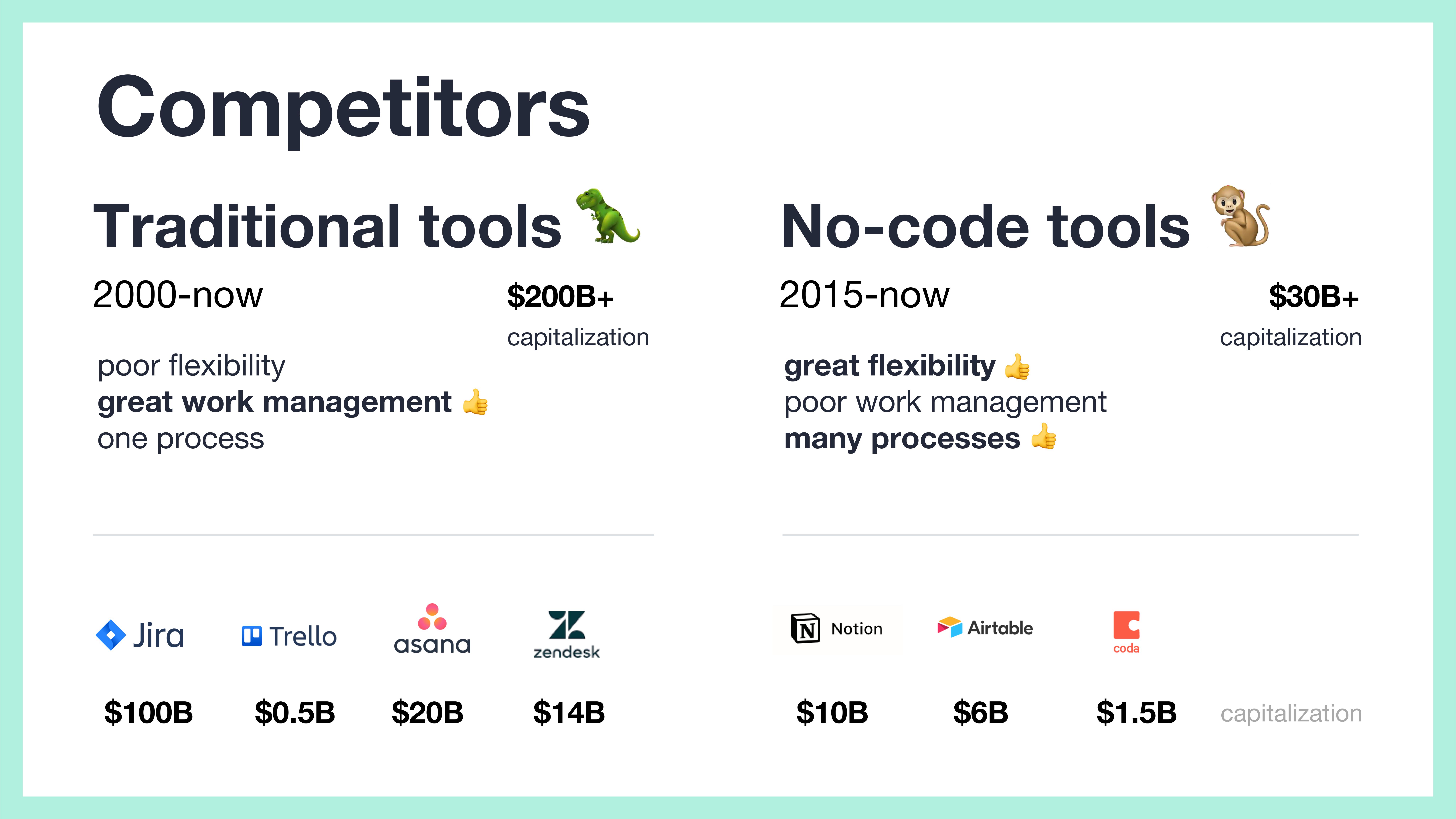
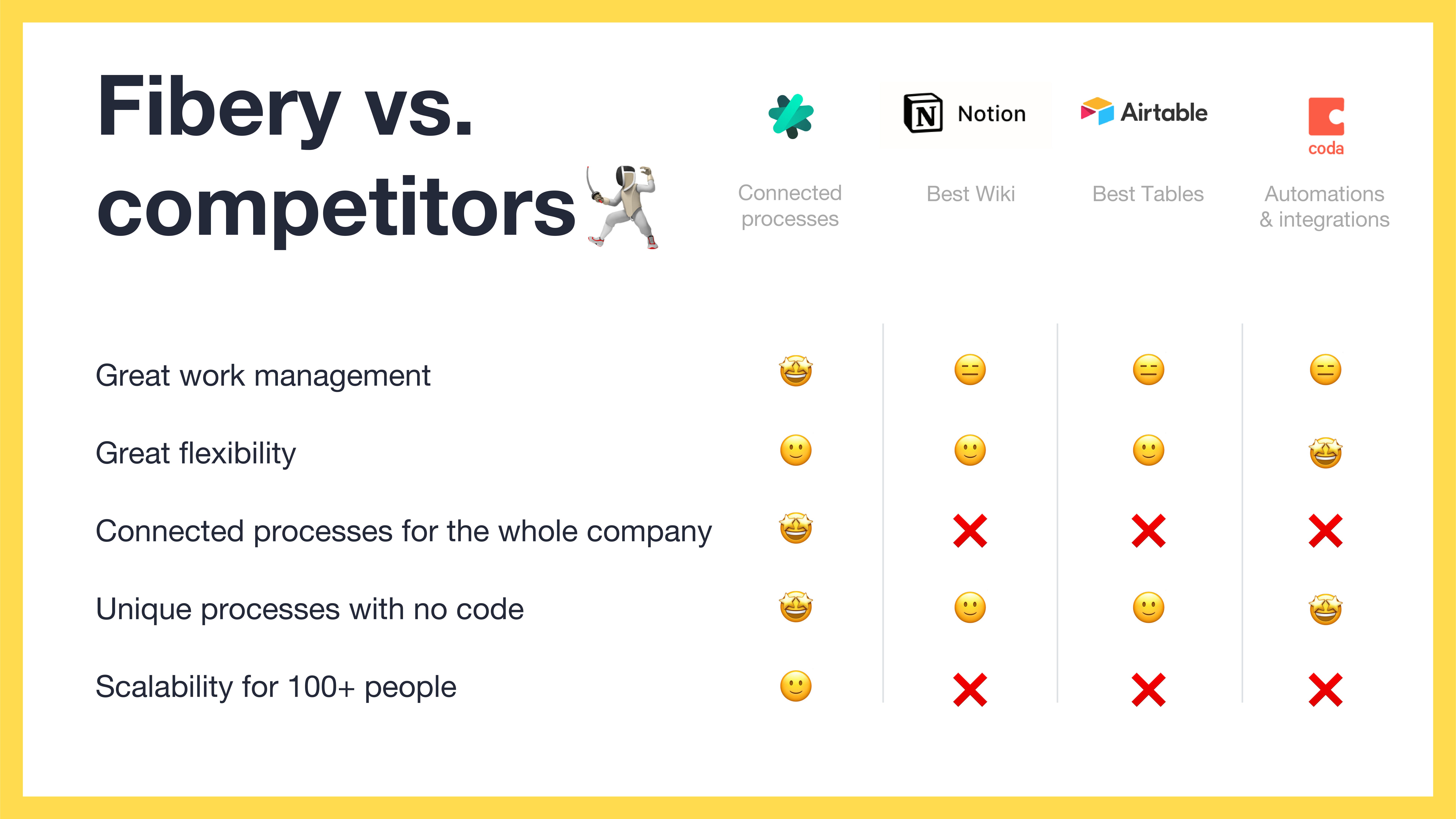
Competition slides are often an afterthought, either because startups underestimate their competitors, or because they claim that they don’t have any. Fibery does a really good job on both fronts.
On slide 5, the company breaks down both the existing players in this space in a really elegant way, and shows that there’s a big market worth going after. It even manages to identify some of the strengths in its competitors, which is always a nice touch — especially if the solution does something slightly different or is able to offer an additional set of features or an approach to the problem that unlocks a broader or different customer base. Investors who might be interested in this space will know Jira, Trello, Asana and Zendesk; Fibery is shrewdly positioning itself opposite a few multibillion dollar companies. Smooth.
On slide 6, there’s a slightly deeper dive into the other no-code tools Fibery considers to be competitors. Again, the company is choosing to praise its competitors for their strengths (“Best Tables” for Airtable and “Best Wiki” for Notion).
This helps give a deeper understanding of what the company perceives is its positioning in the market.
Great business model clarity
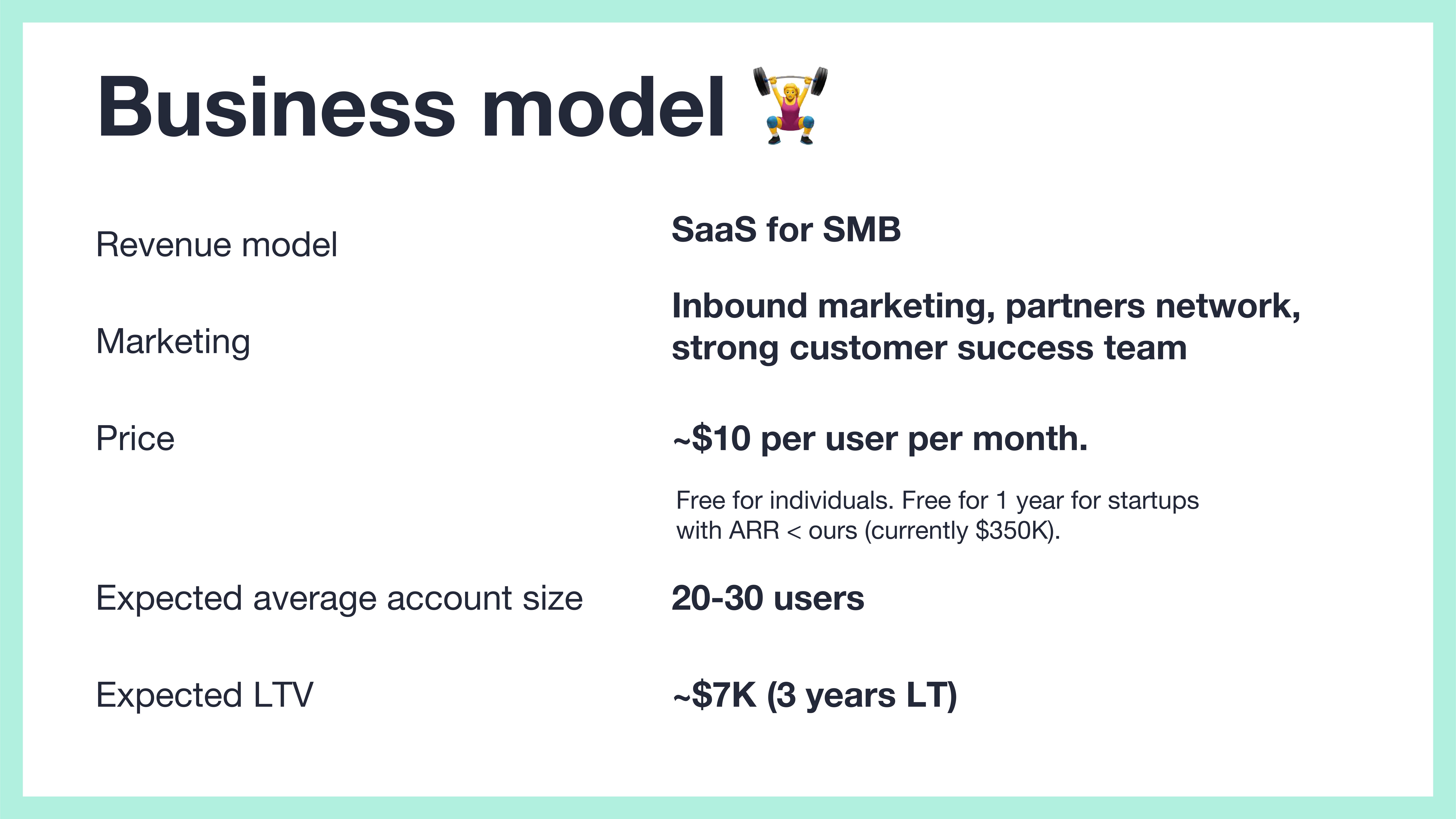
I love a good, clear business model, and Fibery’s is a pretty decent example here; it shows the high-level pricing model (multiaccount SaaS), the target market, and how it is pricing itself. It shows an expected LTV that’s pretty conservative (the $7,000 LTV using these numbers assumes an average account size of 20 or so).
Inbound marketing and customer success are both great when the customers are coming to you, and “partners network” is a little fuzzy. But it’s missing the customer acquisition cost. I’ll say a bit more about this below when I talk about things that could be improved but overall it’s a solid slide.
Metrics!
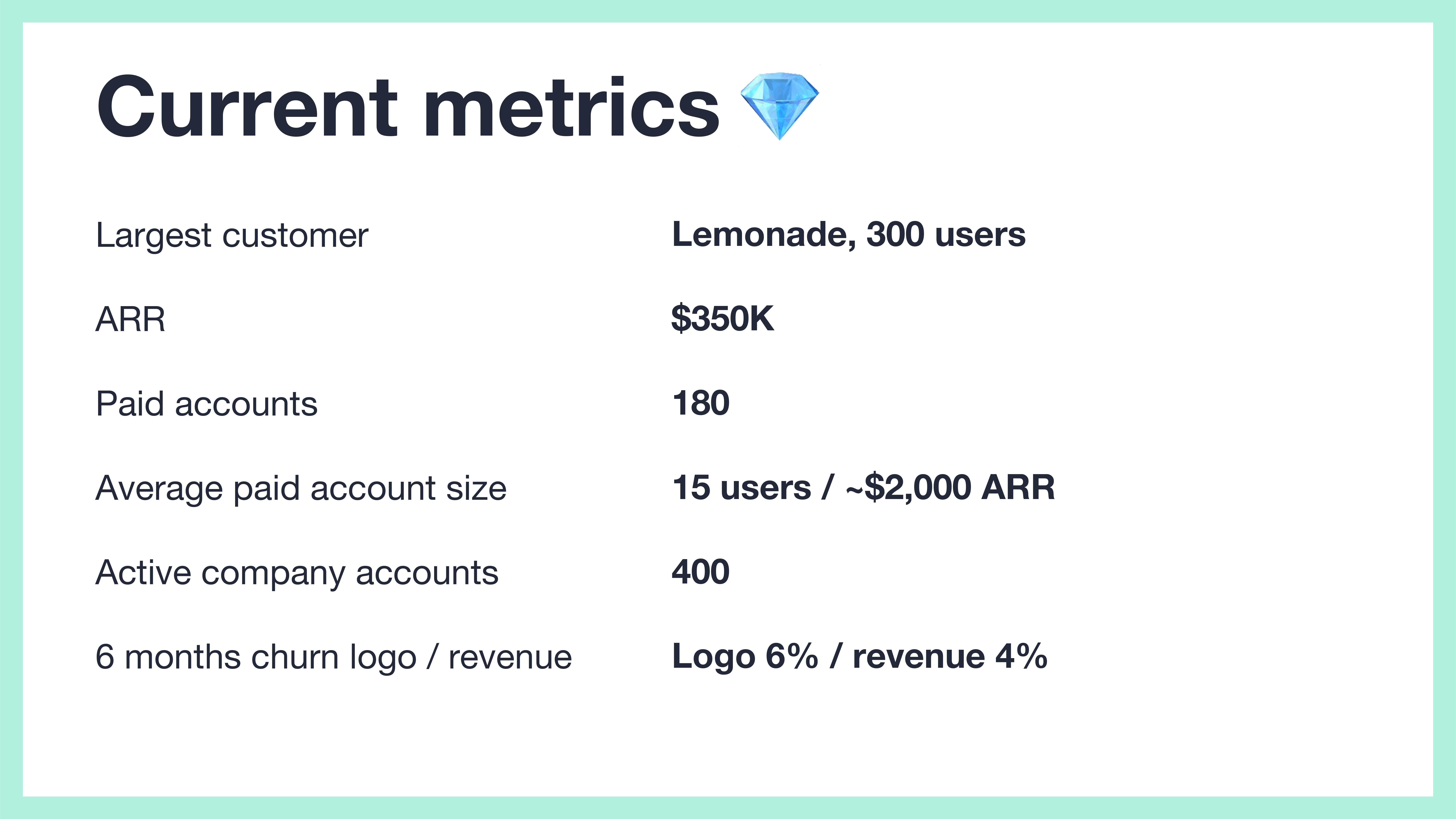
A good traction slide forgives all sins, and this is a great snapshot of where the business is right now. The fact that the logo churn (i.e., churn of number of customers) is higher than the revenue churn indicates that the company is able to retain its higher-value customers. That’s good. The rest of the stats look good, too, for a company at this stage. Clear, simple, concise.
Still, I wish Fibery had shown some of these metrics as graphs. Having $350,000 annual recurring revenue is impressive, but if it had been stagnant for the past six months, that’d ring some warning bells. Investors don’t invest in snapshots, but in trends, so you may as well show them.
The other quirk is that the numbers are inconsistent. On slide 11, it says that the expected average account size is 20-30, but on this snapshot slide, it shows that Fibery currently has 15 paid users per account. Not saying anything about how it expects to grow that number makes me suspicious.
Bonus win: Great ask slide
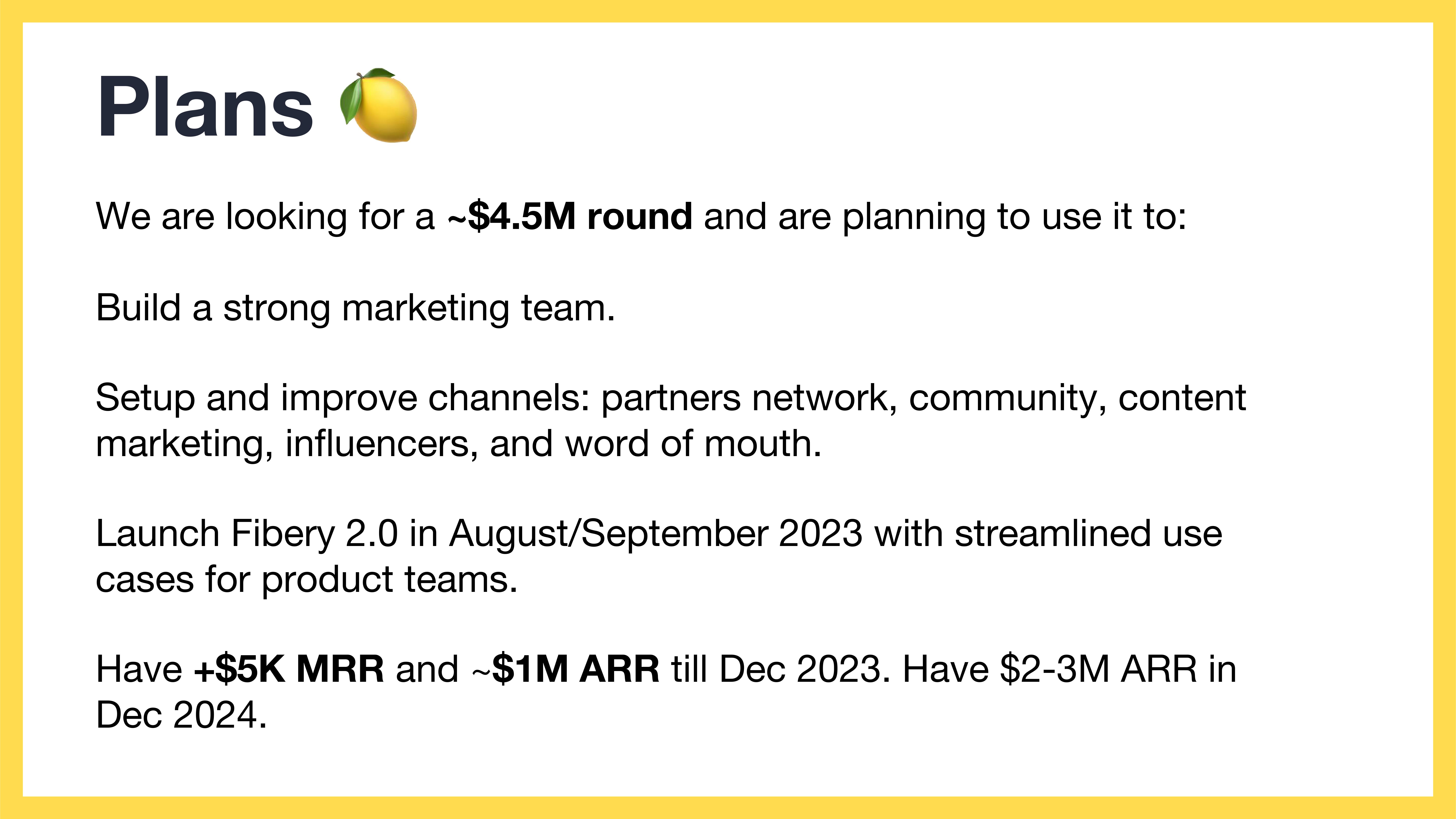
The slide is labeled “plans,” but this is what I usually refer to as the “ask” slide. Lots of founders get this wrong, so it’s a delight to see it done so well. Fibery doesn’t explain what a “strong marketing” team is, and “setup and improve channels” doesn’t mean much. Having clear MRR and ARR goals for EOY 2023 and 2024 is great, and having a clear launch target for a new version of the platform is even better.
In the rest of this teardown, I’ll take a look at three things Fibery could have improved or done differently, along with its full pitch deck!
Three things that could be improved
Fibery seems a little timid: It has big and bold plans for how it will shift the space it operates in, but then fails to quite get there in the story. Be bold! Be brave! Map out your plans!
Wait, what is this‽
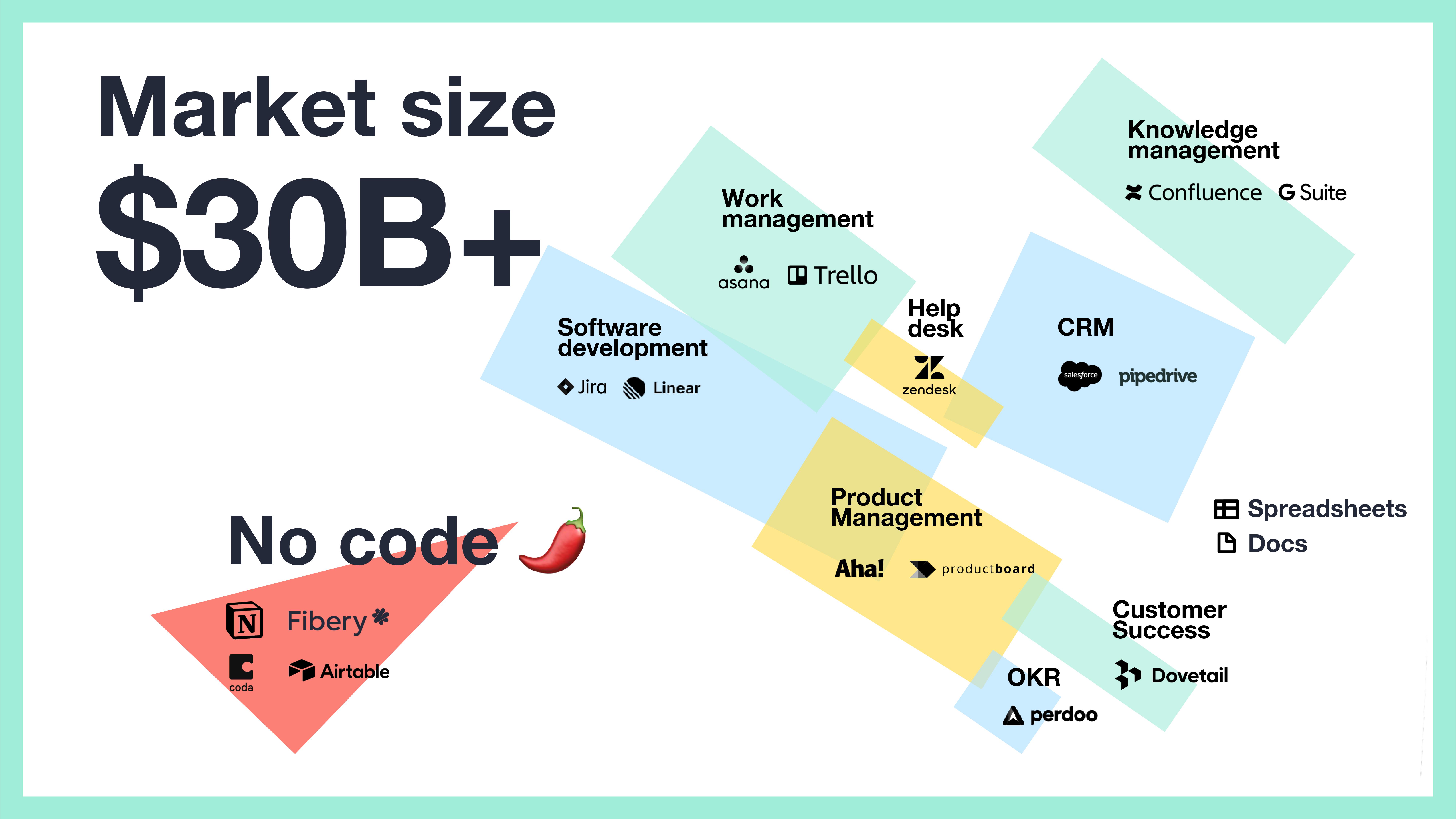
Most startups go with a TAM/SAM/SOM approach to market sizing (although some get it wrong). The market-sizing slide is one of the more important in your deck, and there are lots of different ways of showing and explaining the market size. But this stained-glass chaos isn’t helping anyone. It took me awhile to even find Fibery on this slide (can you be part of your own market size?), and I’m not sure what the company is trying to say here.
Though it can be fun and interesting to approach parts of the story in different and interesting ways, you still have to optimize for clarity. This ain’t it.
What the what‽

Usually, I knock startups for spending too much time on their products while fundraising, but in this case, I think Fibery may have slightly overcompensated. Again, very little of this slide makes sense to me. On the left there are claims that the product solves many technical problems often faced. But the problem slide doesn’t really go into those. I don’t really know what the benefit or purpose is of “connected spaces,” and without additional context, I don’t know what “customizable business domains” is, either. Then there’s the screenshot of the product, but I’m struggling to make sense of it. What are all those boxes? Why are some connected and not others? Is this a user interface? A configuration screen? I don’t get it.
Ensure that the problem you describe on your problem slide is solved strategically on the solution slide. Then on the product slide, show the specific implementation of the problem in more detail. This slide does neither, and I’m left pretty confused.
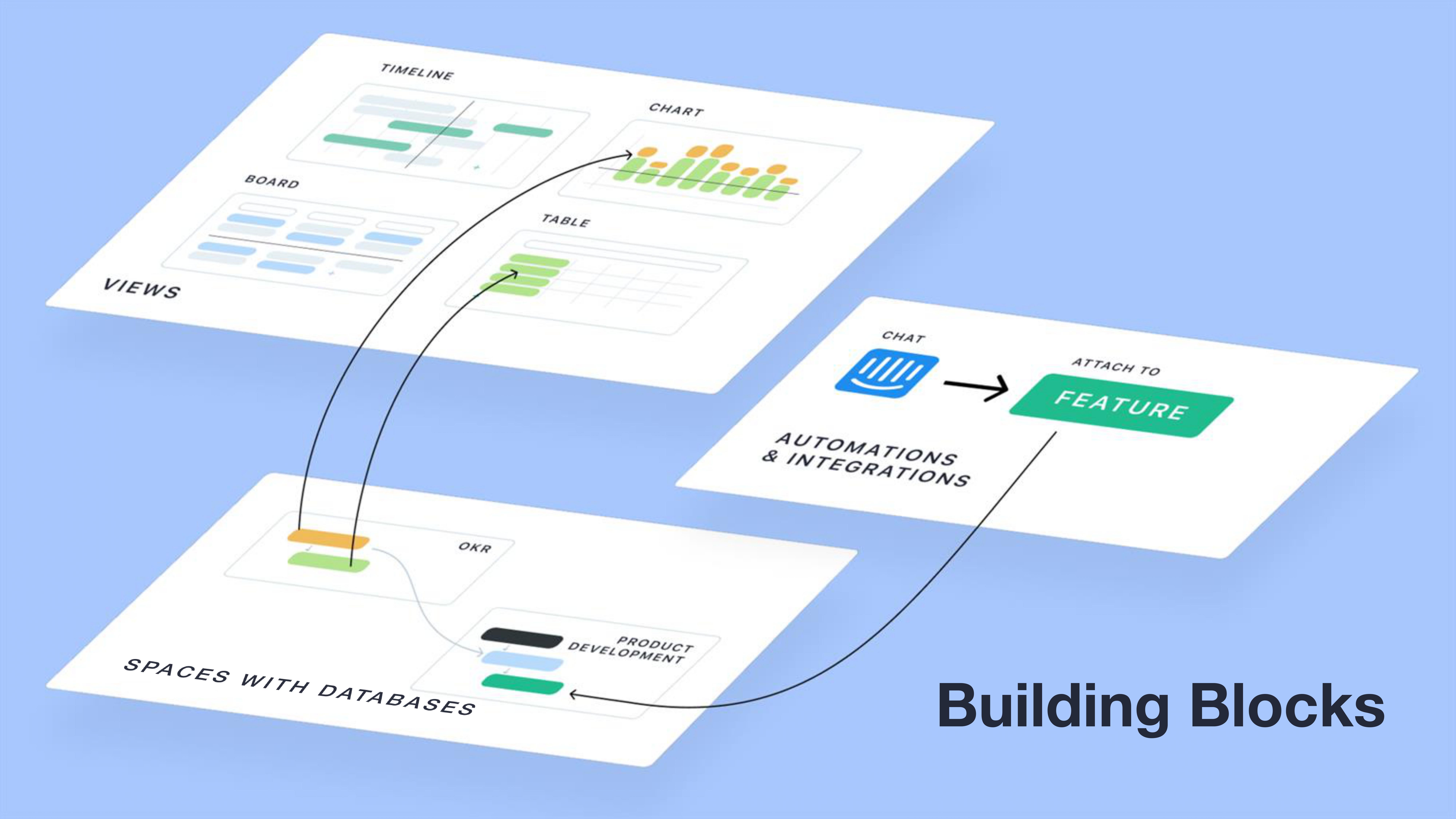
I suspect what the company is trying to explain is that through no-code you can build your own configuration of the product, but there must be a better way to tell this part of the story.
That’s not a team slide
The company stands and falls by its founding team, so it’s very important to do a good job of telling that story. This slide does not.

There are a lot of words on this slide, but weirdly, there’s almost nothing of value here. A team of 25 employees is impressive, but investors don’t care much how big the team is; they care how good it is.
Claiming that there’s a strong R&D team with experience is all good and well, but you need to be able to back that claim up; usually, you do that by showing excellence in product. But as we covered above, the product slides were very confusing and unintuitive, which, in turn, makes me wonder how good this team could possibly be.
Linking to your founder’s Twitter account is a bold move, and, looking at Michael’s account, it is targeted and on-brand enough to work. A more common approach would be to link to your LinkedIn or a bio of some sort.
In any case, this slide fails to answer the most important thing about the team: Why is this team the best team to build this company?
The full pitch deck
If you want your own pitch deck teardown featured on TC+, here’s more information. Also, check out all our Pitch Deck Teardowns and other pitching advice, all collected in one handy place for you!































Comment